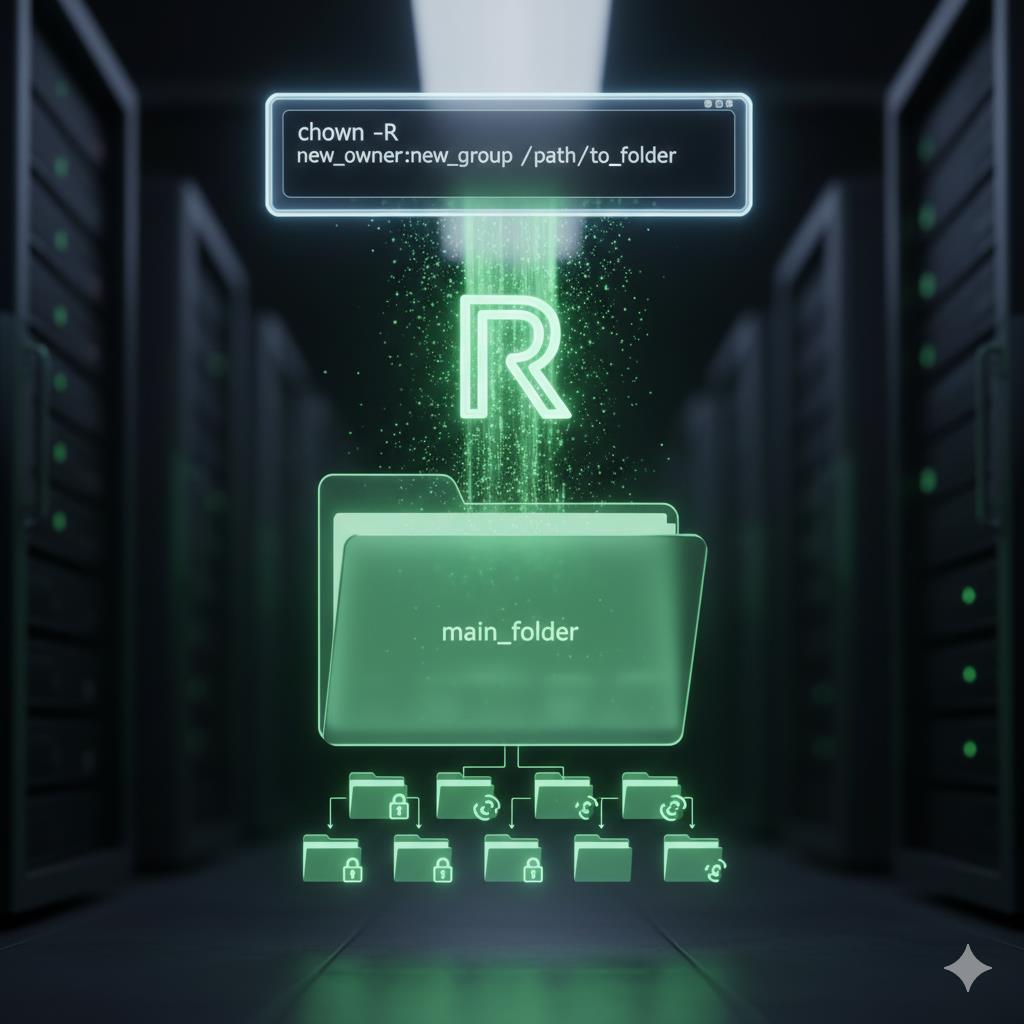
Linux chown Recursive: Change Directory Owner Recursive
When managing Linux servers or VPS environments, changing file and directory ownership is a common task. Whether you’re migrating websites, configuring services, or troubleshooting permission errors, the chown Command is essential.
Website Deployment
After uploading a website to your VPS, the files you have created may be owned by your personal user account. To permit the web server to access these files, it is necessary to change the ownership to the web server user, which is usually www-data. A quick `chown -R` command will be enough to move the ownership from you to the web server, allowing the site to work instantly.
Proper file ownership plays a critical role in Linux security. If a file is owned by an account with several privileges, it is at a high risk. The first threatening possibility that comes to mind is a hacker’s attack. If a hacker manages to compromise your web server, they can also gain access to confidential files. However, by using chown -R to assign ownership to a specific user like www-data, you’re following a key principle of system security called least privilege. This principle states that a user or program should only have the minimum permissions needed to perform its job. By giving your web server user only the ownership of the files it needs, you create a kind of digital barrier. If a hacker breaks into your web server, they will be limited to that specific user’s files and won’t have the power to access other critical parts of your VPS system, such as other user accounts or system files. This significantly reduces the risk of a major security breach. This is when the idea of a recursive command comes into play.
Managing Team Projects
It may happen at times that team members work on a project on a shared VPS. If a member leaves and another takes his/her place, chown -R can be used to transfer the ownership of all project files to the new user.
In this guide, you’ll learn how to use chown recursion, its syntax, and the safest way to apply it.

Contents
What is chown in Linux?
chown stands for change owner. It lets you change the owner and/or group of a file or directory.
Basic Syntax:
chown [OPTIONS] NEW_OWNER[:NEW_GROUP] FILE
Example:
chown user1 file.txt
This assigns ownership of file.txt to user1.
Using chown Recursively
To apply ownership changes to all files and folders inside a directory, use the recursive flag -R.
Syntax:
chown -R NEW_OWNER:NEW_GROUP /path/to/directory
Example:
sudo chown -R www-data:www-data /var/www/html
Changes the owner and group for
/var/www/htmland everything insideIdeal for web servers (Apache, Nginx), where files must belong to
www-data
Useful Options
| Option | Function |
|---|---|
-R | Apply recursively to all subdirectories and files |
-v | Show verbose output of changes |
-c | Report only when a change is made |
Example with verbose output:
sudo chown -Rv user1:user1 /home/user1

Best Practices (Avoid Mistakes!)
✅ Double-check the path before running
chown -R✅ Use
ls -lto confirm ownership changes✅ Run with
sudofor system-level files❌ Never run
sudo chown -R user:user /— It will break system permissions!
When to Use Recursive chown
After migrating websites or applications
When restoring backups
Assigning project folders to new users
Fixing CMS permission issues (WordPress, Joomla, etc.)
Conclusion
The chown command with the -R A flag is a powerful way to manage file ownership in Linux. When used carefully, it helps keep services running smoothly and securely. Always verify paths and ownership before applying changes to avoid system-wide problems.

